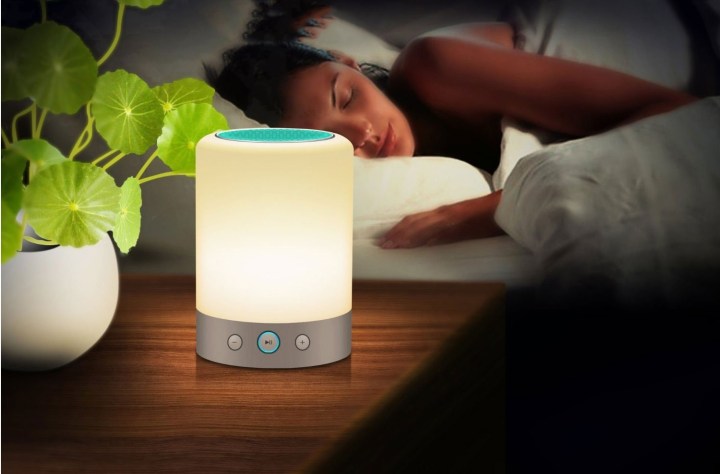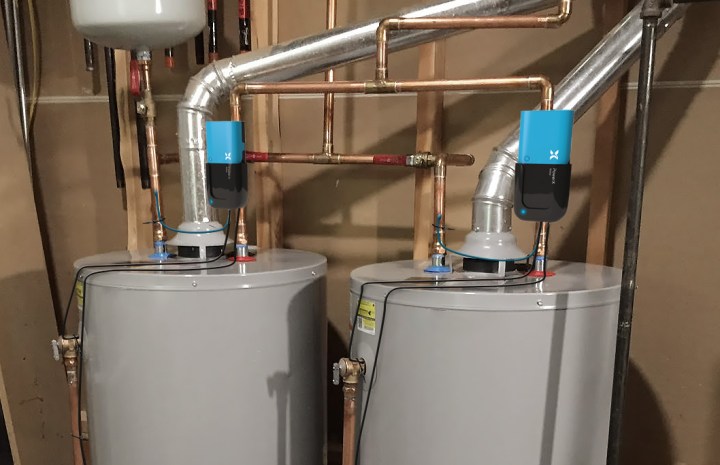Keeping your home’s air clean and free of pollutants is the work of an air purifier. While combative, these devices are designed to only break down and destroy pollutants — not to analyze them. That’s where an air quality monitor enters the equation. Today’s leading air quality monitors are engineered to detect the pollutants streaming through your home’s air. Here’s why that’s important.
The pollutants in our homes

Two of the most common airborne pollutants are fine particles and volatile organic compounds. Fine particles (PM 2.5) are microcosmic air particles with both indoor and outdoor sources. They’re created by everything from cooking and tobacco smoke, to vehicle exhausts and forest fires. Capable of being transported miles from their origins by wind, fine particles can wreak havoc on those with respiratory and heart conditions, children, and the elderly.
Then there are volatile organic compounds (VOCs). Emitted as gases from common solids and liquids found throughout our homes (cleaning products, pesticides, and even printers), long-term exposure to VOCs can lead to respiratory troubles, nausea, and memory impairment.
One other pollutant is radon. Created when the chemical radium (found in the naturally occurring rocks, soils, and waters of the earth) begins to decay. Homes with basements and garage spaces are particularly susceptible to elevated levels of radon. While low levels are present in most domiciles, long-term exposure to elevated radon levels can cause everything from respiratory complications to increased chances for lung cancer.
Fortunately, there are many ways to mitigate airborne pollutants of all types. Fine particles can be handled by air purifiers, fans, and often just cracking a window now and then; the same goes for VOCs. While most homes experience some kind of radon intrusion, houses with heavy radon levels may require the purchase of sophisticated radon-removal equipment.
When it comes to any kind of airborne pollutant, the key is getting ahead of it. That’s what an air quality monitor is for.
Air quality monitors: The more you know

Available from a number of reputable brands, air quality monitors are designed to track and monitor the airborne pollutants in your home. Basic monitors require nothing more than a powered connection to get up and running. Once enabled, the
While there’s not really a bad place to place your home’s air quality monitor, there are several key locations that should be considered when deciding what rooms require the most air-quality attention. Based on our own experience with air quality monitors, here are a number of locations where an air quality monitor could be most effective.
Basements
It’s a fact: Most homes have basements. The trouble is that basements tend to be radon hotspots. This is because of naturally occurring radium in the rocks, soils, and waters around the foundations of our homes. When the radium decays, radon levels begin to rise, due in part to porous foundation materials like poured concrete and limestone (more common in older homes). Additionally, basements (especially unfinished ones) tend to function as all-things-storage for many homeowners. Paint, paint thinner, glue, pesticides, and other chemical substances are often relegated to the cellar which can lead to harmful pollutant buildups.

If your basement is the primary storage space in your home, particularly for construction materials, then we recommend running an air quality monitor in the cellar at all times. Have a bulkhead? Pick a sunny day and open it up for a few hours. While a stray insect or two may walk on in, you’re helping to let egregious amounts of pollutants out.
Garages
Whether detached, attached, or shared with building neighbors, your home’s garage is a close runner-up to the basement for things like elevated radon, carbon monoxide, and VOCs. Everything from paint cans to pesticides can be found in the garage, as well as must-have outdoor gear like lawnmowers, snowblowers, and of course, our cars. As mentioned above, vehicular and equipment exhaust is a leading cause of VOC pollutants. In terms of radon, many garages are built on simple concrete slabs that may stand no taller than a foot or two off the ground — close to radium-decay sources in the surrounding earth.
If your garage is home to construction materials, exhaust-driven hardware, or if you’re concerned about excess radon exposure, consider running an air quality monitor somewhere in the garage that you can easily see and interact with it. Good weather in the forecast? Plan a day where you’ll be home and let the garage door stay ajar for several hours to air out the square footage.
Kitchens

When it comes to our kitchens, one of the biggest culprits of emitted pollutants is the myriad of appliances that we use to cook our food, boil water, clean our dishes, and more. In terms of firing up a meal, combustion appliances like ovens and stovetops can release harmful chemicals like nitrogen oxide and carbon monoxide into the air. For those of us inclined to cook meals on the stove, heating fatty foods, butter, and olive oil can release VOCs. Dishwashers are also prone to releasing VOCs through the evaporative steam that occurs during a normal wash cycle.
While running the kitchen range hood or the fan on your over-the-range microwave is always a good idea, these vents can only do so much, especially if you’re not venting externally. Run an air quality monitor in your kitchen to keep tabs on what kinds of pollutants your appliances and cooking practices are conjuring. Mitigating may mean nothing more than cracking a window or running your home’s HVAC system, but getting on top of the pollutants before a serious build-up is key.
Bedrooms

While you won’t find stoves and dishwashers in your bedroom, there are plenty of other indoor air pollutant sources to worry about. Excited about that new carpet you just shelled out an arm and a leg for? We’d advise sleeping with the windows open for a while. Carpeting (especially new carpeting) is made from a number of man-made chemicals and can release a heavy load of VOCs into your home during the first few weeks of installation. Candles, vacuums, cleaning products, and indoor plants are all essentials for maintaining a clean and bright home but these are also common sources of pollutants.
On top of an air quality monitor, consider running an air purifier in bedrooms with elevated pollutant levels. After all, these are the rooms we sleep in every night, so keeping the air easy to breathe can help with everything from snoring to proper circadian sleep cycles.
Bathrooms
Bathrooms tend to be some of the more pollutant-laden rooms in our homes. Mold and mildew thrive in humid environments, various applicants often contain preservatives that can break down into formaldehyde, and bath mats and other plush accessories can hang onto everything from dander to toxic chemicals. Simply put: Any bathroom could do with an air quality monitor.
Does the monitor pick up on elevated pollutants? Staying on top of your home’s bathroom(s) is your best defense. Create a cleaning schedule that you and your family can adhere to. Be sure to wash, vacuum, and air out walls and floors. When you’re finished showering, towel-dry everything in the tub and run your bathroom’s exhaust fan to remove excess moisture from the air.
Nurseries/changing rooms
The room where we change, nurse, and lay our little ones down for a nap, the nursery/changing room is one room we always recommend keeping an air quality monitor in. While it’s no surprise that diaper time can be a bit messy, some of the long-term effects of disposable diaper breakdown can be devastating to the environment. Infants are also exposed to a number of fragrance-emitting products that can break down into VOCs. This can be anything from oils and creams to baby shampoos.
Our advice: Crack a window, run your HVAC, disinfect and vacuum regularly. And pay attention to the air quality readings from your trusty monitor.
Utility spaces

Last but not least, we’ve arrived at the sacred utility cubby. At first sight, these little hideaway chambers may host nothing more than a furnace, water heater, shelves of cleaning products, and other odds and ends. While quintessential house hardware like our HVAC systems and hot water tanks are manufactured for years of long-haul operation, any minor defect with these components can lead to elevated pollutant levels in the home, particularly VOCs.
If your air quality monitor is giving off high readings for your utility space, it may be time to call in the pros. Scheduling annual maintenance calls with HVAC professionals is key to ensuring a long and healthy life for whatever fundamental gear is heating, cooling, and providing much-needed hot water to our homes.



